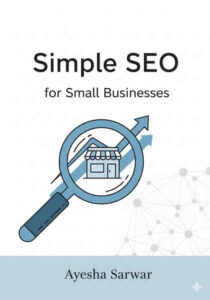In the article What is SEO? An Introduction we took a general look at Search Engine Optimization (SEO). There are lots of technical terms associated with this topic. These include Black Hat SEO, White Hat SEO, and Gray Hat SEO, which are all related.
In this article, we want to take a closer look at what Black Hat SEO is and why you should avoid it.
What is the definition of Black Hat SEO?
To explain this term, let’s briefly recall what SEO generally means. I described the aim of this strategy in the article linked above as follows:
[…] the aim is to optimize a website so that it appears as high as possible in the search results of Google and other search engines.

There are many different ranking factors and therefore many different ways to get your website to rank higher in search results. Some of them are easy to implement, others are more difficult and take some time. Some are good and ethical, but others are frowned upon by Google. And this is where the topic of this article is important.
Black Hat SEO refers to SEO measures that violate the quality guidelines of Google (or other search engines). If you use such methods as a website operator, in the worst case, Google may penalize you and rank your site lower than before (or excludes it entirely from the rankings).
To avoid this, we need to look at which measures fall under this term. In the past, it was often possible to trick Google with Black Hat SEO measures. And sometimes it still works today. However, the algorithm has become much smarter in the meantime.
Ad:
Examples of Black Hat SEO
There are many examples of measures that violate search engine guidelines. Let’s take a look at some of the most common and important ones.
Keyword Stuffing
Keywords are a very important factor in SEO. If you want to rank high in search results for a specific keyword, you need to optimize your page for that keyword. This includes including it in the h1 heading, the meta description, the title, subheadings if applicable, and wherever it fits naturally in the text. None of this violates the guidelines.
It becomes problematic when you insert the keyword extremely frequently and in places where it simply does not fit. The text should read naturally. Texts with keyword stuffing often seem unnatural and therefore do not contribute to a good user experience.

In this example, the keyword ‘SEO’ was included as often as possible. However, the text now reads unnaturally. This is an example of keyword stuffing.
Buying Backlinks
According to Google’s guidelines, buying backlinks is not allowed. There are some agencies that offer to place backlinks on several other pages in exchange for money. Or you pay the operator of a single website to place a backlink to your own website on their website. However, neither of these practices is permitted.
Of course, Google would first have to find out that a backlink has been purchased. This is not possible based on the link alone. Nevertheless, you should play it safe and avoid buying backlinks. If Google does somehow find out that you have purchased links, you could face a penalty.
However, it is allowed to buy links for advertising purposes under certain circumstances. The links must then be marked in the source code with rel=”sponsored” or rel=”nofollow”. This allows Google to recognize that the links are not relevant to the search results. If you buy links this way, it will not affect your search rankings. However, it still has advantages, as potential customers will become aware of your site and it is permitted.
Duplicate content
This refers to website owners who simply copy text from another site and publish it on their own site. Sometimes the texts are slightly altered so that it is not so obvious. For example, there is a tactic of translating texts into another language using a translator and then back into your own language. This can slightly change the sentence structure. However, the text then sometimes appears unnatural.
As mentioned above, search engine algorithms have become increasingly sophisticated and are getting better at recognizing such tricks. Duplicate content is frowned upon and can lead to penalties in rankings. Always write original texts without copying. If you copy text from another site such as Wikipedia, you should always mark it as a quote and provide a link to the source.
Negative SEO
This is a particularly insidious scam. Negative SEO is not about improving your own website’s ranking, but about devaluing your competitors’ websites. If your competitors rank lower, your own website moves up in the rankings.
Negative SEO involves using Black Hat techniques on other websites over which you have influence. For example, a large number of unnatural and low-quality backlinks are created to a competitor’s site in the hope that search engines will then penalize that site.
This is another reason why it is important to keep a regular eye on your own backlink profile. This way, you will quickly notice if your own website is being attacked. Fortunately, Google is now much more aware of such methods.
Hidden Text
This is a Black Hat SEO measure that used to be quite common, but is rarely used today. It involved hiding keywords on the page so that users could not see them.
For example, text is created in the same color as the background color. Or the text is hidden behind an image. This way, readers cannot see these hidden keywords and have a normal reading experience, but search engines are tricked.
Today, however, search engines are no longer as easy to trick as they used to be, which is why this method has (fortunately) fallen out of fashion.

Below the selection there is a text in white on a white background.
Cloaking
With a technique called cloaking, there are two different versions of a page: one for the search engine and one for the user. The version for the search engine is optimized for better rankings. However, the user is then shown different content.
For technical details on this measure, you can take a look at the Wikipedia article on this topic, for example.
This trick is frowned upon and is considered Black Hat SEO because it deceives the user. The general goal of search engines is to a) answer users’ questions as best as possible and b) ensure that users have a good experience with the website. Cloaking tricks both search engines and users by pretending something exists that does not actually exist in that form.
What distinguishes Black Hat SEO from White Hat SEO and Gray Hat SEO?
With measures that fall under White Hat SEO, you are on the safe side. These are measures that are harmless and do not violate the guidelines of Google and other search engines.
Gray Hat SEO, on the other hand, is a gray area. Most of the SEO measures used are White Hat SEO. On the other hand, webmasters also sprinkle in some measures that belong to Black Hat SEO.
In addition, there may be measures that can be viewed critically but do not yet violate search engine guidelines. However, as search engine algorithms are constantly evolving, there is always the risk that such gray areas will soon no longer be permitted either.
Some measures that are now classified as Black Hat SEO were not penalized in the past. At some point, however, this changed and some webmasters got a nasty surprise. I would therefore advise you to only use measures that are definitely classified as white hat SEO. Then you won’t have to worry about your website’s performance in the future.
Why you should avoid Black Hat SEO
Black Hat SEO is still tempting for some website owners and SEO managers today. Since search engines like Google often don’t recognize such tricks immediately, you have a certain advantage. This way, you could improve your rankings for a while and make a lot of money until the search engines notice the tricks and you get penalized.
However, such tactics are not worth the risk. If you are penalized by Google and your pages slip down in the rankings or even disappear from them altogether, it can take a long time to get back to the top. Even if you then reverse the Black Hat SEO measures and notify Google, it can take months to climb back up the rankings.
The goal of an SEO manager should be sustainable and successful SEO measures. These are important today and will continue to be so for several years to come.

0 Comments